2015 Lincoln MKC 2.3 Ecoboost Review (With Video)

Lincoln has been working to get their luxury mojo back for a while, but up to this point it has tried to sell models a half-step larger to luxury shoppers. That meant a major value proposition, but engineers often skimped on luxury to keep prices low. The MKC is an entirely different animal however. This Lincoln is essentially the same size as the Lexus NX and Mercedes GLK. Although the MKC is finally the same size as its competition, it marches to a different drummer, and after a week I finally realized something. It’s refreshing to have something different.
Exterior
Let’s talk competition first. The MKC is Lincoln’s answer to the X3, Q5, NX, XC60, and GLK. This seems to confuse some folks who assume the MKC and the Lexus NX were designed to compete against the X1 and Evoque. Looking at the specs, the MKC sits right between the GLK and Q5 in overall dimensions.
By now you’ve probably heard the MKC is the “Lincoln Escape”, but what does that really mean? The MKC shares safety systems and body structure designs with the Escape. However, it shares no sheetmetal with the Ford. Lincoln didn’t just re-skin the Escape, either. They widened the body and the track while they were at it, resulting in a lower, wider stance that’s more appropriate in the luxury segment than the perky upright character of the Escape. This is essentially the same formula that Lexus used to make the Lexus NX, which is a cousin to the RAV4. Like the NX and RAV4, parts of the Escape lurk inside the MKC, but you have to look fairly hard to find them.
The MKC receives Lincoln’s latest grille design, which is more restrained than the MKT’s odd-looking schnoz. Although pictures of the MKC seem polarizing, passers-by thought the MKC was attractive in person. If you think something about the rear looks a hair unfinished, you’re not alone. It’s the lack of a protruding bumper of any sort. Aside from the unfinished aesthetic, lacking any real bumper means mishaps with taller vehicles are likely to damage the rear hatch in addition to the bumper cover, increasing repair costs.
Interior
The MKC wears the best interior Lincoln has ever created. Period. More than that, the model with real leather is arguably a nicer place to spend your time than the current Q5, GLK, QX50, RDX, or XC60. Opt for the Black Label package and things are taken to the next level. Lincoln shoppers have more ability to customize their crossover than most of the competition with four different upholstery colors that coordinate with three different dashboard and door colors and two wood veneer options (you can’t mix and match). Opting for the Black Label edition gives you an additional four “themes” to choose from. If you want this kind of selection, the MKC and Evoque are really your only options, and the Range Rover doesn’t allow as much customization on base models.
Front seat comfort depends greatly on your body shape. I’m 6-feet tall and found the seat bottom cushions oddly short and lack thigh support. A 5-foot 4-inch tall person told me the seats fit like a glove. Despite being smaller than all but the Mercedes GLK, the rear seats proved comfortable and easily as accommodating as the XC60.
The cargo area is the biggest compromise in the MKC. It’s notably smaller than most of the competition with just 25 cubes of room behind the rear seats. You’ll find about 20 percent more room in the Volvo.
Infotainment
MyLincoln Touch is oddly named for sure, and it’s received more than its share of bad press. Does it crash now and then? Sure. But I actually think MLT is a reason to put the MKC on your list, not take it off. Volvo’s Sensus Connect uses a smaller screen and, despite the new connected features, still lacks decent control of iOS/USB media devices. Audi’s MMI and Mercedes COMAND are attractive systems, but lack the voice command library you get in the Lincoln. iDrive is still my preferred infotainment option, but Lincoln may give it come competition with SYNC3, due out next year.
Drivetrain
Under the hood, the order sheet starts out with a 2.0L direct-injection turbo engine good for 240 horsepower and 270 lb-ft of torque. Instead of a 6-cylinder engine filling out the top of the range like the Europeans, Lincoln opted to borrow the 2.3L turbo from the new Mustang instead. Five years ago, that would have been derided as insane, but Lexus has gone 4-cylinder only in the new NX and Volvo has committed to the demise of their five and six cylinder turbos as well. Sadly, the 2.3L engine loses some grunt in the translation, dropping from 310 horsepower and 320 lb-ft in the Mustang to 285 ponies and 305 lb-ft of twist. 2.0L shoppers can choose between front- or all-wheel drive while the 2.3L model gets all-wheel drive as standard.
Both engines are mated to the 6F35 6-speed automatic transaxle. The 6F35 transaxle is likely the reason for the power reduction from the tune used in the Mustang. Although Ford does not specifically list torque capabilities like General Motors, the Ford 6F35 is substantially similar to the GM 6T50 transaxle, topping out at 260 lb-ft. (GM and Ford designed their 6-speed transaxles together.) Since the engine cradle design in the MKC is largely unchanged from the Escape, the higher torque capacity 6F50 and 6F55 transaxles likely didn’t fit. In order to accommodate the 2.3L engine, Ford replaced the 6F35’s standard torque converter with a higher torque unit but no transmission internals were changed. This allowed the entire package to have approximately the same dimensions as the 2.0L drivetrain. I suspect this also explains why the maximum tow rating drops 1,000lbs when equipped with the 2.3L engine.
Drive
In an interesting twist, most MKCs on dealer lots will have a suspension with active dampers. This is a significant difference between the Lincoln and the competition which generally doesn’t have active dampers available at any price. This means we must have a quick suspension lesson since active dampers are a huge part of the MKC’s personality.
Springs and dampers work together to make a car ride and handle a certain way. Springs support the vehicle’s ride height and compress and rebound to conform to the road surface. Dampers control the movement of the spring in both directions. Spring and damping rates are carefully matched by vehicle engineers and in most cars they are fixed. In vehicles with dynamic dampers, the spring rate stays constant and the damping rate becomes a variable. In order for this to work, you have to start with a “soft” spring and when you want a firmer ride you attempt to compensate with “firmer” damping. While systems like this greatly improve the ride and allow the driver to customize the suspension within a particular range, they can feel quite different.
The first hint Lincoln had a different mission in mind for the MKC is obvious when you start driving. If the suspension is in comfort mode, you get the softest ride in this segment by a mile. The MKC is so soft in this mode that I initially assumed the baby Lincoln was 1,000lbs heavier. With the suspension in normal mode, the MKC feels more buttoned down, but there is still plenty of tip and dive and body roll. “Sport” firms things up but the feeling isn’t the same as you’d find in a traditionally sprung vehicle. The reason is that although the dampers can restrict motion, the springs are still pillowy soft.
Initially I was disconcerted by the soft suspension and assumed the athletic abilities would be harmed as a result. I was wrong. With a 0-60 sprint of 6.15 seconds, the MKC 2.3L beats most of the entries, matches the 325 hp XC60 R-Design and only lags the X3 xDrive35i and RDX in the non-performance category. It also stopped from 60 MPH in an impressive 112 feet in our tests and a respectable .83Gs in Edmund’s skidpad test. (TTAC doesn’t have access to a skidpad.) That’s all possible because the MKC is light for a luxury crossover, ranging from 3,791 in FWD 2.0L trim to to 3,989 lbs in the AWD 2.3L model.
Pricing
As you’d expect from Lincoln, pricing starts low at $33,100, undercutting BMW by over $5,000, and we get about $500 of additional equipment in the base MKC. Adding AWD to the base model tacks on $2,495. That sounds steep but Lincoln bundles the dynamic suspension and a few other goodies with it. Our 2.3L AWD tester started at $40,145 and had $7,775 of options added to make an essentially fully loaded MKC.
The Black Label model is an interesting option. Black Label is about luxury and customization, not performance. This means you can get the 2.0L engine with front wheel drive in Black Label trim starting at $46,205. For the extra dosh, a “shopping assistant” will help you choose from four unique interior themes, five unique wood veneers and some extra paint options. The interior is further upgraded with faux-suede headliners and more standard features. In addition to the goodies, you get improved service with scheduled maintenance and wear item coverage (shocks, belts, etc), a loaner car when yours is in for service, lifetime car washes at a Lincoln dealer and annual detailing services.
I have to admit when I first took the MKC out on the road, I didn’t like it. The well-appointed interior is attractive, but the ultra-plush driving dynamics took some getting used to. Then an odd thing happened. A friend of mine who is in her early 30s said “I’m tired of the harsh ride in my X3 but I still want a crossover.” I had her drive the MKC and it was love at first tip and dive. I suddenly realized: from the Lexus NX to the Mercedes GLK, every one of the competition is trying to be the soft-roader that can lap the Nurburgring in under 9 minutes. Except the MKC.
The Lincoln can hang with the middle of the pack in terms of handling, but the handling feel is an entirely different matter. The soft suspension makes turn-in feel lazy, steering feel non-existent and the cabin hushed. The combination means the MKC is eminently capable with high limits, but the design of the vehicle makes it hard to determine where those limits are located. If that sounds like the kind of product Lexus used to be known for (before they too started chasing BMW), you’re right. Once I stopped chasing the X3, I realized how refreshing it was to have a competitive product without the “me-too.” Bravo Lincoln.
Lincoln provided the vehicle, insurance and one tank of gas for this review
Specifications as tested
0-30: 2.26 Seconds
0-60: 6.15 Seconds
1/4 Mile: 14.8 Seconds @ 92.5 MPH
Average economy: 20.3 MPG over 699 miles

More by Alex L. Dykes
Latest Car Reviews
Read moreLatest Product Reviews
Read moreRecent Comments
- Peter I want a self driving red ragtop 1958 Plymouth Fury. Just like the car in the movie Christine.
- Mgh57 Doesn't seem like this tech is ready for prime time.
- Nathan The Ram is the most boring looking of the full size trucks, kind of like a Tundra.If they cancel the Ram Classic, I hope a full resign makes the Ram at least look interesting.
- DJB1 I'll be all for it when it has a proven safety record. I have an awesome life and a lot to live for, so right now I'm not putting that in the hands of overconfident tech-bros.
- Mgh57 I had to read the article because I had had no idea what the headline meant. I've never seen this in the Northeast. Don't understand the point. Doesn't seen efficient aerodynamically



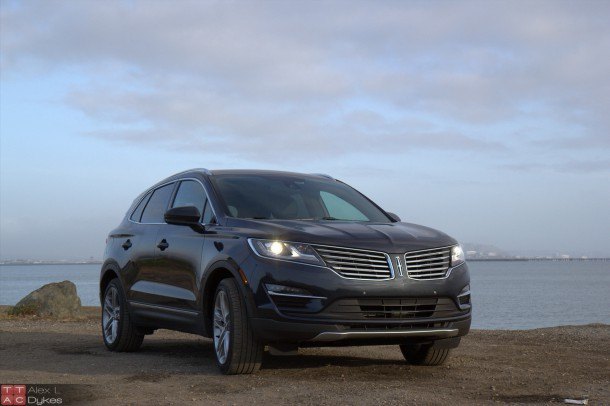



















































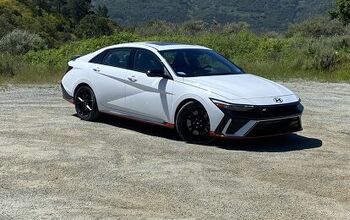
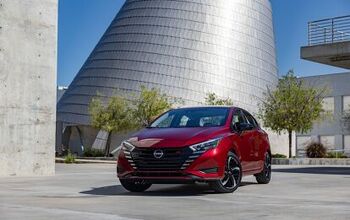
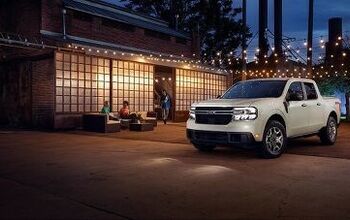
![2015 Ford F-150 Platinum 4×4 3.5L Ecoboost Review [With Video]](https://cdn-fastly.thetruthaboutcars.com/media/2022/07/17/9043901/2015-ford-f-150-platinum-44-3-5l-ecoboost-review-with-video.jpg?size=350x220)
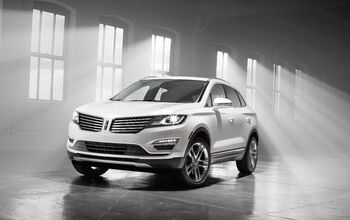
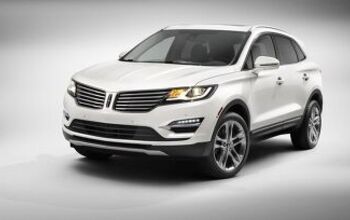

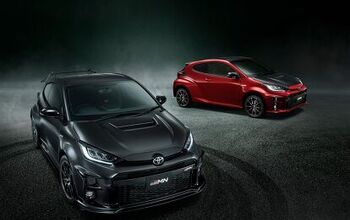
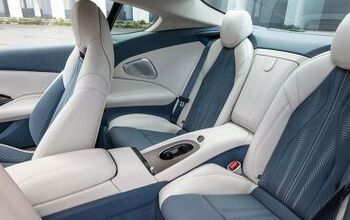

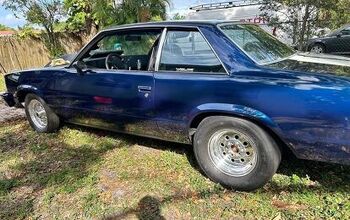
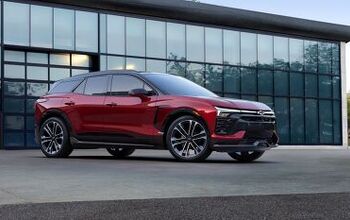
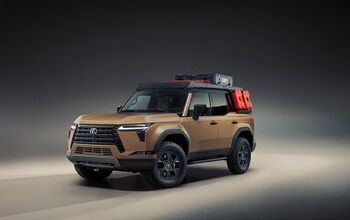

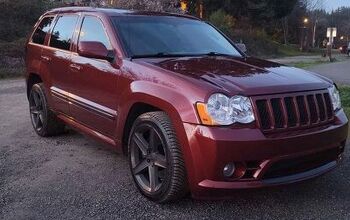
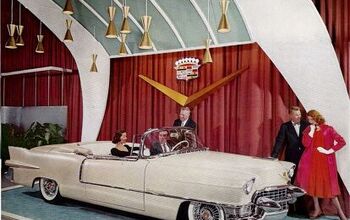


Comments
Join the conversation
Alex, the specs on the Ford transmissions are in the name, the 6F35 is a 6 speed Front wheel drive transmission with a torque rating of 350 Nm (or 258 ft*lbs).
Lincoln deserves some credit for putting in the time to visually differentiate its vehicles from their Ford counterparts. The problem is they usually make their cars look worse (MKZ/Fusion, MKT/Flex). In this case they definitely made a better looking Escape and offer some features and powertrains that are unique.